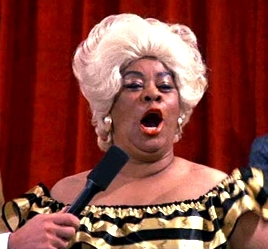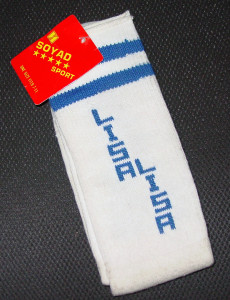Jada Pinkett Smith announced that she is boycotting the Academy Awards this year due to the lack of diversity among the acting nominees. I’m sure that will put a huge dent in the show‘s ratings, as the 40 million people who tend to tune in to the telecast do so to see Jada Pinkett Smith. Following in Pinkett Smith’s footsteps, Spike Lee and Pinkett Smith’s husband Will Smith announced that they were joining in the boycott.
The issue is that out of twenty nominated actors and actresses, twenty are Caucasian. At first glance that doesn’t appear to be very diverse. At second glance, it’s still not diverse, but a boycott is not going to bring about the change that is needed.
Granted, the conversation about the lack of diversity among the nominees needs to be had. The Motion Picture Academy needs to step up its efforts to expand its membership beyond white men, who at this time overwhelmingly make up its ranks.
However, the Academy Award nominations are the result of the actual problem, which is the lack of diversity involved in the movies being made by Hollywood. Movie studios and production companies need to be engaged in the diversity conversation. They’re the ones making the majority of films from which the Academy chooses the nominations. While Caucasian men make up the majority of ticket buyers, serving other demographics adds to a studio’s bottom line. Remember how shocked everyone was when the Sex & the City movie proved a box office bonanza? It’s a movie with female leads that sold tickets primarily to women moviegoers and grossed over $400 million, and it isn’t even good!
Women like to see their lives on the screen. So do African Americans. And Latinos. And people of Asian descent. And gay people. And trans people. And older people. And so on and so on.
Seeing one’s life on the screen means more than merely seeing people of one’s race or ethnicity or gender or sexual orientation on screen. As the conversation surrounding this year’s nominees focuses on race, let’s look at some recent black nominees.
During the past decade, Chiwetel Ejiofor and Lupita Nyong’o were nominated for portraying slaves. Denzel Washington was nominated for his role as an alcoholic drug-abusing pilot. Octavia Spencer and Viola Davis were nominated for playing maids. (Spencer won, but Davis lost to Meryl Streep’s portrayal of Margaret Thatcher. Yes, the Iron Lady won over the lady who irons.) Mo’Nique won for her portrayal of an abusive mother. Forest Whitaker won for playing a corrupt, human rights-abusing dictator. Barkhad Abdi was nominated for playing a pirate. Ruby Dee was nominated for playing the mother of a drug kingpin.
Also nominated was Gabourey Sidibe for her portrayal of an African-American teenager who is repeatedly raped by her father and abused by her mother and others. That performance lost to Sandra Bullock’s portrayal of a nice, white lady who takes in a troubled African American teen.
Other characters portrayed by recently nominated white folks include Colin Firth as a king with a speech impediment, Eddie Redmayne as a brilliant scientist, Benedict Cumberbatch as a brilliant computer scientist, Leonardo DiCaprio as a stockbroker, Patricia Arquette as a loving mother, Sandra Bullock as an astronaut, Daniel Day-Lewis as the U.S. president who freed the black slaves, Robert Downey Jr. as a white actor portraying a black man, and Christoph Waltz as a bounty hunter who emancipates and mentors a black slave. I’m not going to go through every white nominee; we’ll be here all day!
From the examples given, eagle-eyed observers may notice the types of parts for which black actors and white actors get nominated for Academy Awards. Lee and the Smiths are not wrong in saying there is a problem here that needs to be fixed.
Joining the boycott are Curtis Jackson, star of such not-Oscar nominated films as Get Rich or Die Tryin’, Home of the Brave and Righteous Kill. Under his nom de rap 50 Cent, Jackson posted on Instagram a plea for Chris Rock to step down as the award show’s host. The same request came from Tyrese Gibson, star of such not-Oscar nominated films as The Fast & the Furious, 2 Fast 2 Furious, The Fast & the Furious: Tokyo Drift, Fast & Furious, Fast Five, Fast & Furious 6, and Furious 7.
Calvin Broadus, under his nom de rap Snoop Dogg, posted a video on Instagram that said “Fornicate the Academy Awards,” though not in those exact words. Broadus was not nominated for his role in The Wash, in which he stretched his acting chops by portraying Dr. Dre’s weed-smoking best friend. That film has an 8% on Rotten Tomatoes.
Until a few minutes ago I thought The Wash was a remake of the seventies movie Car Wash, which has an 86% rating on Rotten Tomatoes. Per Wikipedia, The Wash is an original movie written and directed by Mark Jordan under his nom de rap, DJ Pooh.
While the soundtrack of The Wash didn’t produce any Billboard Hot 100 hits, the soundtrack to Car Wash did. It was on January 29, 1977, that its theme song hit #1, an incredible feat given it’s a song about a car wash. Amazingly, the song holds up to this day.
Friday is dance day at Tunes du Jour. Our playlist kicks off with Rose Royce’s “Car Wash.”
Click here to like Tunes du Jour on Facebook!
Follow me on Twitter: @TunesDuJour.


